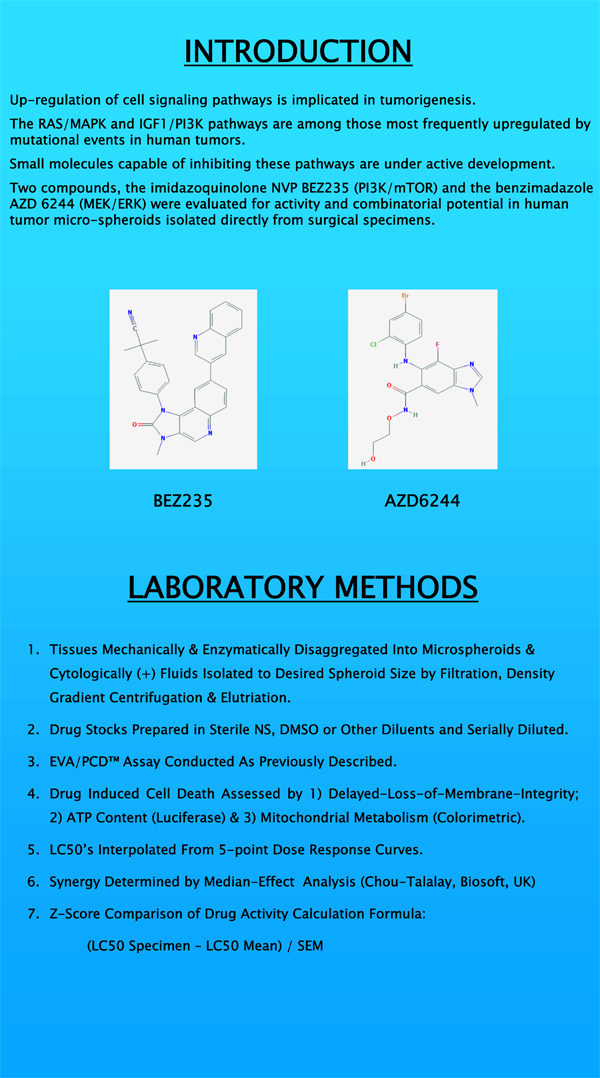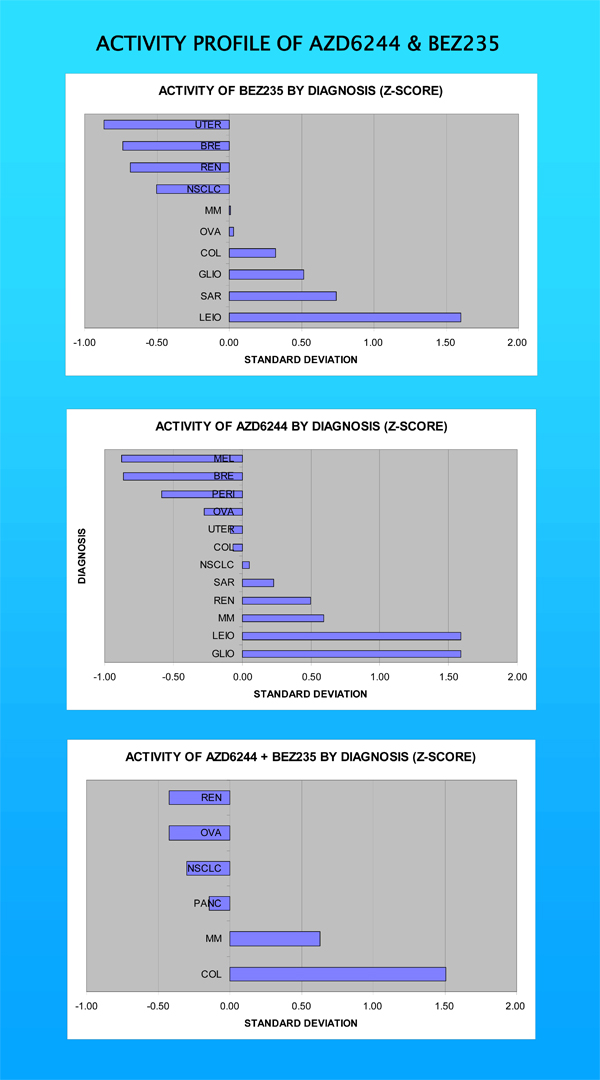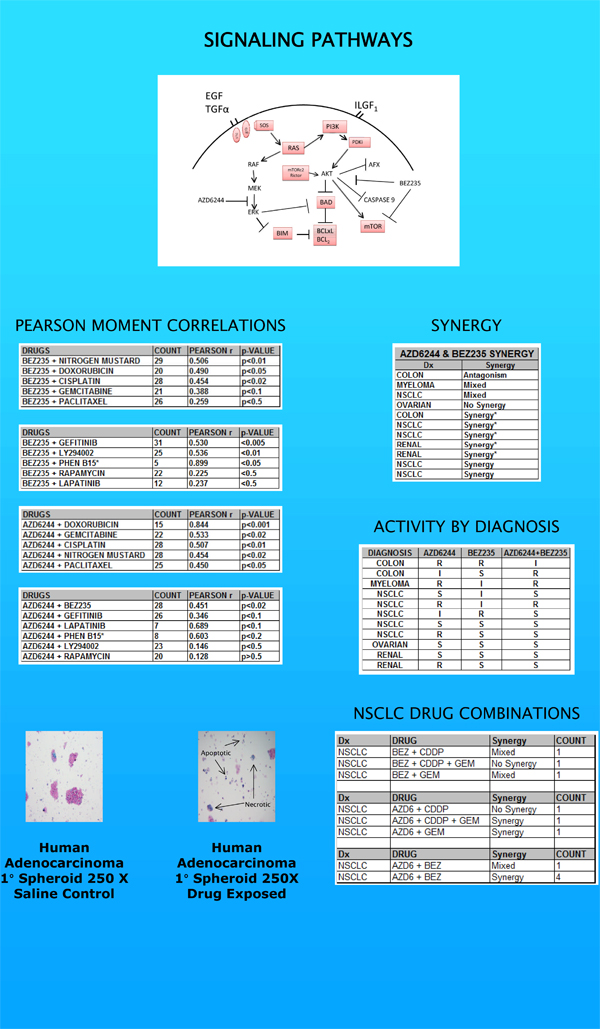Poster from Rational Therapeutics Session at 2011 AACR Meeting
As I mentioned in a previous post, on April 3, 2011, I traveled to Florida to present our most recent findings on novel compounds that target two parallel circuits in cancer cells at the American Association of Cancer Research Meeting.
Following are shots of the poster that was presented. I encourage you to leave any comments and/or questions here, as I would be pleased to respond to your inquiries.




 About Dr. Robert A. Nagourney
About Dr. Robert A. Nagourney
Dr. Nagourney received his undergraduate degree in chemistry from Boston University and his doctor of medicine at McGill University in Montreal, where he was a University Scholar. After a residency in internal medicine at the University of California, Irvine, he went on to complete fellowship training in medical oncology at Georgetown University, as well as in hematology at the Scripps Institute in La Jolla.
During his fellowship at Georgetown University, Dr. Nagourney confronted aggressive malignancies for which the standard therapies remained mostly ineffective. No matter what he did, all of his patients died. While he found this “standard of care” to be unacceptable, it inspired him to return to the laboratory where he eventually developed “personalized cancer therapy.”
In 1986, Dr. Nagourney, along with colleague Larry Weisenthal, MD, PhD, received a Phase I grant from a federally funded program and launched Oncotech, Inc. They began conducting experiments to prove that human tumors resistant to chemotherapeutics could be re-sensitized by pre-incubation with calcium channel blockers, glutathione depletors and protein kinase C inhibitors. The original research was a success. Oncotech grew with financial backing from investors who ultimately changed the direction of the company’s research. The changes proved untenable to Dr. Nagourney and in 1991, he left the company he co-founded.
He then returned to the laboratory, and developed the Ex-vivo Analysis - Programmed Cell Death ® (EVA-PCD) test to identify the treatments that would induce programmed cell death, or “apoptosis.” He soon took a position as Director of Experimental Therapeutics at the Cancer Institute of Long Beach Memorial Medical Center. His primary research project during this time was chronic lymphocytic leukemia.
He remained in this position until the basic research program funding was cut, at which time he founded Rational Therapeutics in 1995. It is here where the EVA-PCD test is used to identity the drug, combinations of drugs or targeted therapies that will kill a patient's tumor - thus providing patients with truly personalized cancer treatment plans.
With the desire to change how cancer care is delivered, he became Medical Director of the Todd Cancer Institute at Long Beach Memorial in 2003.
In 2008, he returned to Rational Therapeutics full time to rededicate his time and expertise to expand the research opportunities available through the laboratory.
He is a frequently invited lecturer for numerous professional organizations and universities, and has served as a reviewer and on the editorial boards of several journals including Clinical Cancer Research, British Journal of Cancer, Gynecologic Oncology, Cancer Research and the Journal of Medicinal Food.







I am probably reading this in an incorrect way, but the “Synergy” table doesn’t seem to indicate synergy of the two drugs for ovarian, while the “Results” slide mentions that there is synergy for ovarian?
Thank you for clarifying,
Claudia
Claudia:
Thank you for your interest and your good question.
The analyses were exploratory in nature and could only be conducted upon tissues that provided adequate material. As such, the synergy studies were limited to those samples that were adequate for both AZD and BEZ as single drugs as well as the combination of both drugs, all conducted in parallel. We provide the results of several analyses to show 1) activity i.e. cell injury and death and 2) synergy i.e. combined cell kill effects. Synergy is a very specific term that means “supra-additivity” It is not synonomous with “activity” that could be additive or even sub-additive. We did not intend to suggest that the one ovary that did not reveal synergy would mean that no synergy would ever be observed. Rather, larger data sets would need to be generated. In the meantime, ovary cancers did reveal “activity” in several studies that might support the use of BEZ, AZD or AZD & BEZ in such patients.